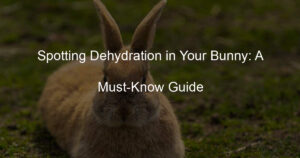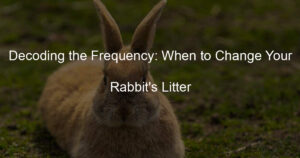Welcome to the world of creating a suitable habitat for Netherland Dwarf rabbits! These adorable and energetic creatures require a comfortable and safe environment to thrive and express their natural behaviors. In this guide, we will explore the essential elements that contribute to an ideal living space for your Netherland Dwarf companion.
From choosing the right housing options to providing appropriate bedding, feeding, and enrichment, we will cover all the aspects necessary to create a habitat that promotes your rabbit’s well-being and happiness. Join us as we delve into the art of crafting a nurturing and engaging environment for Netherland Dwarf rabbits, where they can flourish and enjoy a fulfilling life as cherished members of your family.
What are the key considerations when setting up a habitat for Netherland Dwarf rabbits?
When setting up a habitat for Netherland Dwarf rabbits, there are several key considerations to keep in mind. First and foremost, the enclosure should be spacious enough to allow for adequate movement and exercise. Netherland Dwarf rabbits are active creatures and require enough room to hop, run, and stretch their legs.
Additionally, the habitat should be secure and protected from potential predators, ensuring the safety of the rabbits. Providing proper ventilation, lighting, and temperature control are also important factors to create a comfortable and healthy living environment. Access to fresh water, appropriate nutrition, and a cozy resting area are additional considerations that contribute to the overall well-being of Netherland Dwarf rabbits.
How does the size of the enclosure impact the well-being of Netherland Dwarf rabbits?
The size of the enclosure has a significant impact on the well-being of Netherland Dwarf rabbits. A spacious enclosure allows them to engage in natural behaviors, exercise, and explore their surroundings. Limited space can lead to stress, frustration, and a sedentary lifestyle, which can negatively affect their physical and mental health.
It is recommended to provide a living space that is at least four times the length of the rabbit’s body, allowing them to move freely and exhibit their natural behaviors. A well-sized enclosure promotes overall well-being, reduces the risk of obesity and other health issues, and contributes to the happiness and vitality of Netherland Dwarf rabbits.
What are the essential components of a comfortable and safe living space for Netherland Dwarf rabbits?
A comfortable and safe living space for Netherland Dwarf rabbits should include several essential components. A sturdy and escape-proof enclosure is necessary to ensure the rabbits are protected from potential hazards and predators. The habitat should have appropriate bedding, such as straw or hay, to provide comfort and insulation.
Additionally, providing a separate litter area with appropriate rabbit-safe litter helps maintain cleanliness and hygiene. Access to fresh water in a spill-proof container and a balanced diet of high-quality rabbit pellets and fresh vegetables are essential for their health. Lastly, providing enrichment items like chew toys, tunnels, and platforms allows for mental stimulation and helps prevent boredom.
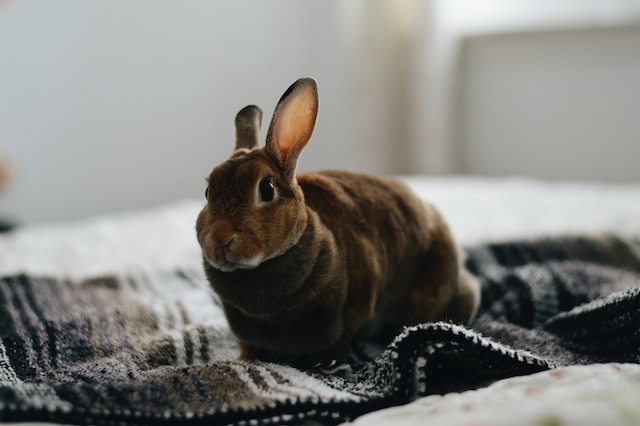
Are there specific flooring options that are suitable for Netherland Dwarf rabbit habitats?
When selecting flooring options for Netherland Dwarf rabbit habitats, it is important to choose materials that are safe, comfortable, and easy to clean. Solid flooring surfaces, such as plastic, laminate, or vinyl, are commonly used as they are smooth, non-toxic, and resistant to urine absorption. These surfaces are also easier to sanitize and maintain hygiene.
However, it is crucial to provide additional soft resting areas or provide ample bedding to prevent sore hocks, a condition that can occur due to constant pressure on the feet. Avoid wire mesh flooring as it can cause discomfort and potential foot injuries for these small rabbits.
How can the inclusion of hiding spots and tunnels enhance the habitat for Netherland Dwarf rabbits?
The inclusion of hiding spots and tunnels can greatly enhance the habitat for Netherland Dwarf rabbits. These small and curious rabbits enjoy exploring and having places to retreat and feel secure. Providing hiding spots such as small enclosures, cardboard boxes, or wooden structures allows rabbits to have private spaces where they can relax and feel safe.
Tunnels, both purchased and homemade, provide additional opportunities for exercise and mental stimulation. Rabbits can run through tunnels, hide inside them, or even use them as cozy sleeping spots. Including these hiding spots and tunnels in the habitat enriches the environment, promotes natural behaviors, and enhances the overall well-being of Netherland Dwarf rabbits.
What are the best bedding materials to ensure a cozy and clean environment for Netherland Dwarf rabbits?
To ensure a cozy and clean environment for Netherland Dwarf rabbits, there are several suitable bedding materials to consider. Soft materials such as straw, hay, or wood shavings make excellent choices for bedding. These materials provide insulation, and comfort, and are readily available.
Avoid using cedar or pine shavings, as the strong aroma can be irritating to rabbits’ respiratory systems. It’s important to provide enough bedding to allow rabbits to burrow and create comfortable resting spots. Regularly monitoring the bedding and cleaning the enclosure as needed help maintain a fresh and hygienic environment for the rabbits.
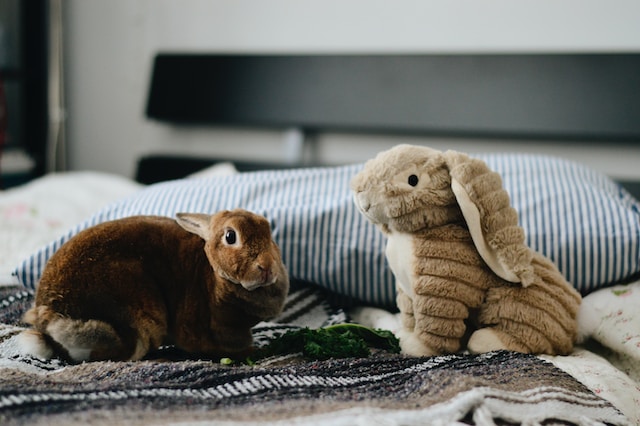
How can temperature and ventilation be regulated in a Netherland Dwarf rabbit’s habitat?
Regulating temperature and ventilation is crucial to ensure the well-being of Netherland Dwarf rabbits. These rabbits are sensitive to extreme temperatures and require a comfortable environment. The habitat should be located in an area that avoids direct exposure to sunlight or drafts. During warmer months, providing shade and ensuring proper air circulation through the use of fans or open windows helps prevent overheating.
In colder months, providing insulation, such as extra bedding and warm hiding spots, helps maintain a suitable temperature. Regular monitoring of the habitat’s temperature and ventilation is essential to keep Netherland Dwarf rabbits comfortable and safe.
What are the recommended enrichment activities to keep Netherland Dwarf rabbits mentally stimulated?
Keeping Netherland Dwarf rabbits mentally stimulated is important for their overall well-being. Enrichment activities provide mental engagement and prevent boredom. Some recommended activities for Netherland Dwarf rabbits include providing chew toys, such as wooden blocks or apple twigs, which help satisfy their natural instinct to chew.
Puzzle feeders or treat-dispensing toys encourage problem-solving and reward-based activities. Offering a variety of safe and non-toxic toys that can be manipulated or tossed around, like tunnels, balls, or rattling toys, can also provide mental stimulation. Additionally, regular supervised time outside the enclosure for exploration and interaction with their human caregivers promotes socialization and mental enrichment.
| Habitat Component | Description | Importance |
|---|---|---|
| Spacious Enclosure | Adequate room for exercise and movement | Allows for physical activity and prevents boredom |
| Safe Flooring | Soft and non-slip surfaces | Prevents injuries and provides comfort |
| Hiding Spots and Tunnels | Shelters and tunnels for security and exploration | Offers a sense of security and encourages natural behaviors |
| Quality Bedding | Absorbent and dust-free materials | Provides comfort and maintains cleanliness |
| Proper Ventilation | Air circulation without drafts | Ensures fresh air and prevents respiratory issues |
Are there any potential hazards or toxic substances to avoid in a Netherland Dwarf rabbit’s habitat?
There are several potential hazards and toxic substances to avoid in a Netherland Dwarf rabbit’s habitat. Certain plants, such as lilies, azaleas, and tulips, can be toxic if ingested and should be kept out of reach. Chemicals, including household cleaners, insecticides, and pesticides, should also be kept away from rabbits as they can be harmful if accidentally consumed.
Electrical cords and wires should be properly secured and out of reach to prevent chewing hazards. Additionally, avoid using bedding materials treated with chemicals or dyes, as they may be harmful to rabbits. Regularly inspecting the habitat and removing any potential hazards helps maintain a safe and rabbit-friendly environment for Netherland Dwarf rabbits.
How can proper lighting be incorporated to support the natural rhythm of Netherland Dwarf rabbits?
Proper lighting plays a crucial role in supporting the natural rhythm of Netherland Dwarf rabbits. These small and delicate rabbits, like many other animals, have an innate circadian rhythm that influences their behavior and overall well-being. To incorporate proper lighting, it is essential to mimic the natural day-night cycle they would experience in their natural habitat.
This can be achieved by providing a consistent lighting schedule that includes periods of both light and darkness. During the day, natural light or full-spectrum artificial lighting can be used to provide a well-lit environment. It is also crucial to ensure that the lighting is not too harsh or direct, as Netherland Dwarf rabbits prefer dimmer light. Additionally, providing a period of darkness during the night is important to allow them to rest and maintain a healthy sleep-wake cycle.
What are the considerations for outdoor versus indoor habitats for Netherland Dwarf rabbits?
When considering the habitat for Netherland Dwarf rabbits, there are important factors to consider for both outdoor and indoor environments. For outdoor habitats, rabbits should be protected from extreme temperatures, harsh weather conditions, and potential predators. A well-secured enclosure with a solid bottom and strong fencing is necessary to prevent escapes and protect them from predators.
Adequate shelter should be provided, ensuring it is insulated and well-ventilated to maintain a comfortable temperature. Indoor habitats, on the other hand, offer greater control over the environment, making it easier to maintain stable temperatures and protect against external threats. However, indoor enclosures should still provide ample space for exercise, fresh air circulation, and access to natural light. Regardless of the habitat choice, regular monitoring and maintenance are essential to ensure the rabbits’ safety and well-being.
How can the habitat design promote exercise and physical activity for Netherland Dwarf rabbits?
Creating a habitat design that promotes exercise and physical activity is crucial for the health and happiness of Netherland Dwarf rabbits. These energetic rabbits require regular exercise to prevent obesity and keep their muscles and joints strong. The habitat should be spacious enough to allow them to hop, run, and explore freely. Providing multiple levels, ramps, tunnels, and hiding spots can encourage them to engage in natural behaviors like climbing and burrowing.
Including toys, such as tunnels, balls, or chew toys, can stimulate their minds and provide additional opportunities for physical activity. Regular out-of-cage time in a safe and supervised area is also important to allow for more extensive exercise. It is essential to ensure that the habitat design promotes both physical and mental stimulation to keep the rabbits active and happy.
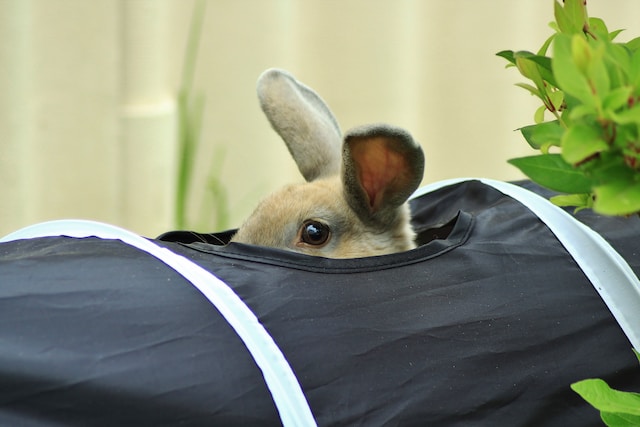
Are there specific feeding and watering solutions to optimize the habitat for Netherland Dwarf rabbits?
Optimizing the habitat for Netherland Dwarf rabbits involves providing appropriate feeding and watering solutions. Rabbits require a diet consisting mainly of high-quality hay, fresh vegetables, and a limited amount of pellets.
The habitat should have designated feeding areas, preferably with hay racks or feeding bins that are elevated to prevent contamination. Water should be provided at all times in a clean and accessible manner, either through gravity-fed water bottles or bowls that cannot be tipped over easily.
It is important to regularly check and replenish both food and water to ensure the rabbits have a constant supply of fresh and clean sustenance. Additionally, incorporating foraging opportunities, such as puzzle feeders or scattering food around the habitat, can encourage natural feeding behaviors and mental stimulation.
Conclusion
As we conclude our exploration of creating a suitable habitat for Netherland Dwarf rabbits, we recognize the importance of providing these small and spirited creatures with an environment that meets their specific needs. By understanding their natural behaviors and instincts, we can create a habitat that promotes their well-being, happiness, and overall health.
From providing ample space for exercise to offering cozy hiding spots and suitable bedding, we have learned how to create a safe and enriching home for our Netherland Dwarf companions. Additionally, we have discovered the significance of a balanced diet, fresh water, and the inclusion of stimulating toys and activities to keep them mentally and physically engaged.
By prioritizing their comfort, security, and stimulation, we can ensure that our Netherland Dwarf rabbits thrive and enjoy a fulfilling life in their carefully crafted habitat. So, let us embark on this rewarding journey of creating a suitable habitat for our furry friends and providing them with the love and care they deserve.



